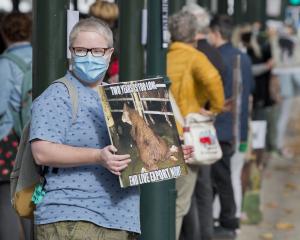The biggest event on every dairy farmer's calendar is finally here, writes dairy farmer and Southern Rural Life columnist Bruce Eade.
Calving is in full swing for most southern farmers with the middle of August upon us.
The mating decisions and choices we made in October last year are all now coming to fruition.
As I've said before, I really enjoy this time of year, seeing the next generation ''hatch''.
Will it be a heifer?
The anticipation, the excitement and the disappointment when it's a bull is all part and parcel of the season.
It's a busy time of year with many different classes of stock at different stages.
Milkers, colostrum cows, springers and dry cows all in different mobs and mostly in different locations.
Reels and standards are at a premium at this time of year.
When we designed our barn, we put a lot of thought into future-proofing it.
It was built with enough room to accommodate all cows at the same time.
As you read this, other than the colostrum cows going out during the day, everything will still be fully indoors, with the milkers going outside during the day from about the 15-20th of August, depending on the weather.
They usually stay indoors at nights until the end of August.
So far the weather has been pretty kind and I know a lot of ''barn guys'' have had their cows out for a while now; but we believe an extra couple of weeks grass saved now could certainly pay dividends in September, if the growth is a bit slow.
It's one thing to have 300 cows calve in the first three weeks - it's another thing to be able to feed them three weeks later.
Drys and springers stay inside till they have calved.
The springers calve in purpose-built 15m x 25m loose calving pens filled with post peelings.
They have free access to their own section of the feed lane during the daytime.
This enables them to be fed a ration specifically tailored to them with the relevant minerals mixed in with their silage.
Because it's right next to the cowshed and we are always working around the area, it's easy to keep an eye on them; and when you combine this with a warm and dry environment, the only calf deaths are really only stillborn deaths.
Obviously this system isn't for everyone and as anyone who has built a barn or looked at pricing one will know, it doesn't come free.
But as more environmental and animal welfare codes are pressed on to us it's certainly something the sustainable dairy farmer must seriously look at.
The benefits far outweigh the negatives in my opinion and experience.
For example, you have all the effluent from your cows from May till most of August, captured and stored until the ground conditions are favourable for spreading.
This then reduces the amount of brought-in nitrogen fertiliser needing to be applied.
We apply our ''slurry'' to our silage ground, which is harvested on farm, put in the pits, feed to the cows in the winter, turned into effluent over winter - after being eaten by the cows, then spread on silage ground the next spring; and so the cycle continues, year after year.
Cows kept indoors need to eat less to keep warm, so the amount of feed needed is less and the utilisation is pretty much 100%.
And as I sit here writing this, listening to the rain belting down on the roof, I take comfort in the fact that all ''our girls'' are inside, dry, warm and any calves born tonight won't have to survive the rain and wind chill factor overnight.
Don't get me wrong, this certainly isn't a skite session, this was a huge financial investment we made all those years ago, outside the thinking of the traditional New Zealand dairy system.
We made that decision for the long term good of the land and most importantly, for the long term good of our cows.
Isn't that what sustainability is all about . . .
Happy calving.












